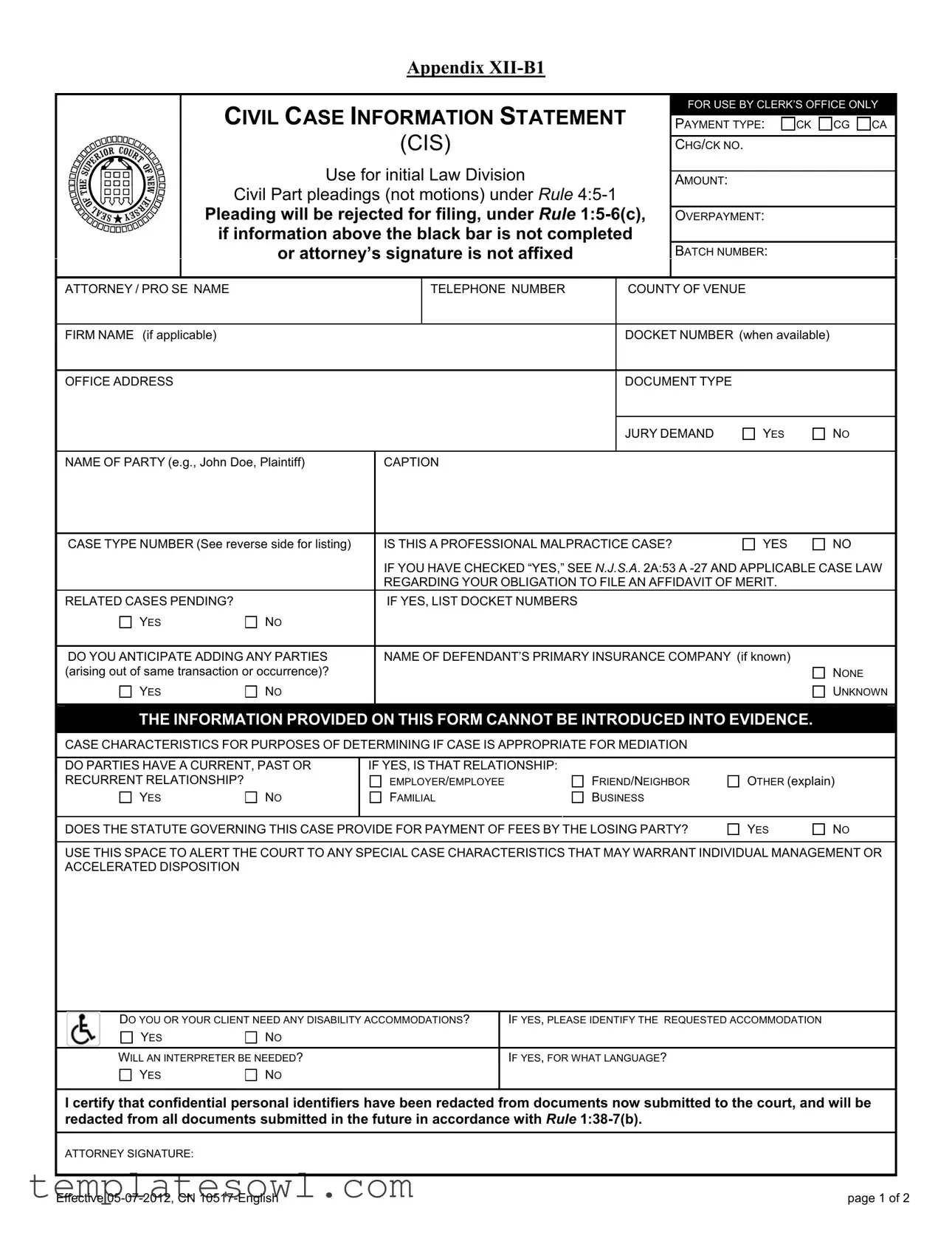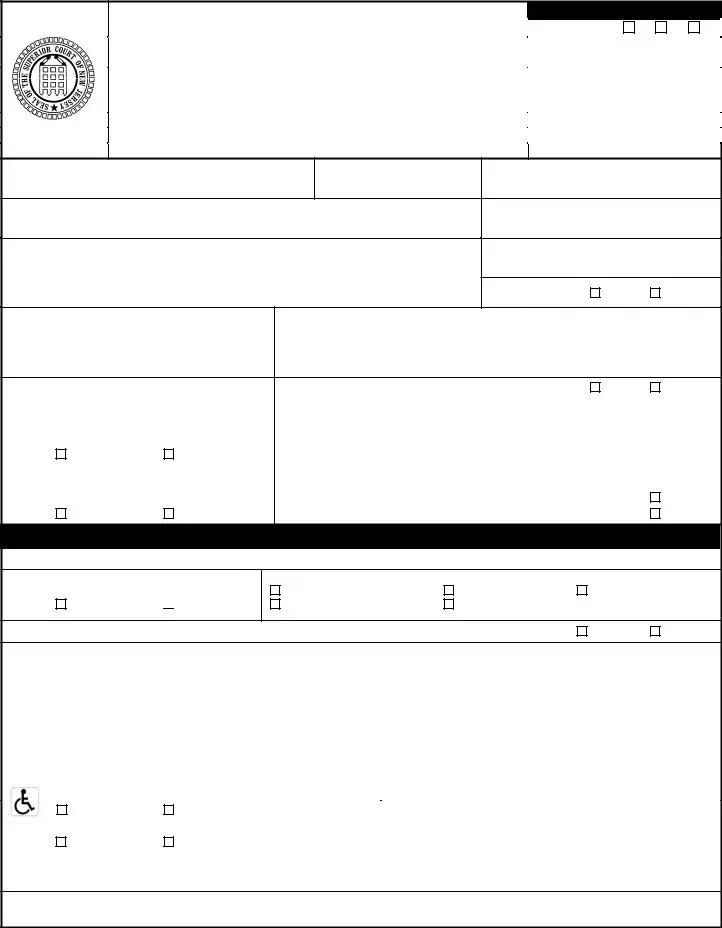What is the Case Information Statement (CIS) form?
The Case Information Statement (CIS) form is a document required for the initial pleadings in civil cases within the Law Division. This form gathers essential information about the case, including the parties involved, the nature of the case, and relevant characteristics that may affect its management. It ensures that the court has the necessary details to proceed efficiently with the case.
When is the CIS form used?
The CIS form is specifically for initial pleadings under Rule 4:5-1 of the New Jersey court rules. It should not be used for motions. If the form is not completed correctly or lacks the attorney's signature, the court may reject the filing. Therefore, it is crucial to fill it out thoroughly and accurately.
What information must be included in the CIS form?
The CIS requires detailed information that includes, but is not limited to, the names and contact details of the parties, the case type, and whether the case involves professional malpractice. Additionally, any related cases must be disclosed, along with the anticipated need for disability accommodations or an interpreter. Completing all sections is essential to avoid filing issues.
What happens if the CIS form is incomplete?
According to Rule 1:5-6(c), if the information above the designated black bar is not completed or if the form is missing the attorney's signature, the court will reject the submission. This could cause significant delays in the case process, so it is important to double-check the form before submitting it.
Can the information in the CIS be used as evidence in court?
It is important to note that the information provided on the CIS form cannot be introduced into evidence during the trial. The form serves as administrative information, enabling the court to understand case characteristics and manage it effectively.
How do I determine the appropriate case type to list on the CIS form?
The CIS includes a section listing various case types categorized by discovery tracks. Each category specifies a different duration for discovery, so it is crucial to select the type that best fits your case. If you believe that your case should fall under a different track not listed, you can indicate your reasoning in the designated section on the form.
What if my case involves professional malpractice?
If a case is related to professional malpractice, it is essential to check "YES" in the relevant section of the CIS. New Jersey law mandates that an affidavit of merit must be filed in such cases. Thus, understanding this obligation is vital to comply with the legal requirements and avoid any pitfalls later in the proceedings.
How do I request accommodations or an interpreter on the CIS form?
If you or your client require accommodations for a disability or need an interpreter for a specific language, those requests can be indicated directly on the form. Clear communication of such needs ensures that appropriate arrangements are made, helping to facilitate a smoother legal process.
Can individuals represent themselves when filing the CIS form?
Yes, individuals can complete the CIS form and represent themselves in court. Such parties are often referred to as “pro se” litigants. They must adhere to the same filing requirements as attorneys, including completing the CIS accurately. It is advisable for pro se litigants to familiarize themselves with the rules governing civil cases to strengthen their position in court.



